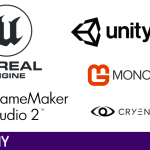How AI is Transforming the Creative Sectors Examples of application in 2024
Artificial intelligence (AI) is having a growing influence across creative sectors like film, animation, gaming, and writing. Rather than overnight automation, AI is augmenting human creativity in phases. This article explores key AI impacts and recommendations across industries.
Contents:How AI is Transforming the Creative Sectors

Filmmaking Evolutions
Pre-Production Ideation
- AI script writing tools can suggest:
- Plot lines
- Character profiles
- Dialog cues
- This allows writers to brainstorm more ideas faster.
Production Assistance
- AI helps automate:
- Complex scene rendering
- Color correction
- Audio sweetening
- This saves studios time and budgets.
Post-Production Optimization
- With past movie data, AI can:
- Guide better edit pacing
- Create optimized trailers
- Compare alternative endings
- This tunes movies to maximize audience enjoyment.

Animation Developments
Concepting With AI
- Tools like DALL-E make:
- New character ideas
- Prop designs
- Backgrounds
- This widens creativity possibilities.
Physics Simulation
- Manual animation of effects like smoke and water is very slow.
- AI can run quick, customizable physics sims instead.
Rendering and Localization
- AI reduces rendering times through:
- Simplifying unnecessary frames
- Adaptive asset optimization
- It also automates localization via automatic voiceovers and text translation.

Gaming Advancements
Automated Game Environments
- Procedural content generation with AI makes unique:
- Landscapes
- Foliage
- Buildings
- This saves developers time.
More Realistic NPCs
- AI allows in-game characters to have:
- More dynamic conversations
- Improved decision making
- Diverse behaviors
Player-Tuned Experiences
- By understanding playstyles, AI enables:
- Personalized quests
- Tailored difficulty
- Customized loot drops
- This tightened engagement and enjoyment.

Litterature Developments
Idea Generation
- AI aids provide:
- Premise suggestions
- Plot templates
- Character drafts
- This boosts ideation.
Editing Assistance
- AI helps analyze and improve:
- Pacing
- Tone
- Grammar
- Consistency
- This lifts quality.
Automated Reporting
- For technical writing, AI converts data into narrated text on topics like:
- Sports statistics
- Financial analysis
- This automates repetitive reporting.

Innovations in Music & Audio
Music Composition
- AI tools can:
- Generate melodic ideas
- Suggest chord progressions
- Create genre-based arrangements
- This expands composers’ creative palette.
Mixing & Mastering
- By analyzing popular songs, AI can:
- Auto-equalize and compress
- Tweak volumes, pannings, reverb
- Reduce background noise
- This enhances sound quality.
Synthesized Vocals
- AI can now clone a singer’s voice and even generate style-based lyrics for:
- Pre-production demos
- Backing choruses
- New renditions
- This expands creative options.
In summary, AI is increasingly empowering the musical process from composition through to the final product.
Table on Sector Specific AI Opportunities
| Creative Field | Key AI Opportunities | Transformational Outcomes |
|---|---|---|
| Film | Script ideation, production automation, edit optimization | Better storytelling, cost savings, maximized audience engagement |
| Animation | Generative concept art, accelerated physics simulation, intelligent rendering | More creative options, faster pipeline, reduced finish times |
| Gaming | Procedural environments, adaptive NPCs, personalized experiences | Immersive worlds, evolved gameplay, increased engagement |
| Writing | Idea expansion, AI editorial feedback, automated reporting | Overcome writer’s block, draft improvements, scale content creation |
| Music/Audio | Melodic ideation, intelligent mixing, cloned vocals | Faster composition, enhance sound quality, more experimentation |
Conclusion
Key AI Implementation Tips
Creators exploring AI integration should keep certain best practices in mind:
Let Creativity Lead
- Apply AI for repetitive tasks only
- Focus AI on efficiency
- Reserve creative aspects for humans
Phase In Gradually
- Avoid overnight overhaul
- Test tools incrementally first
- Adjust workflows based on transparent capability
Audit Issues Closely
- Check for biases in data or code
- Ensure creative liberty remains intact
- Review impact on workplace dynamics
Prioritize Uniquely Human Elements
- Spend extra time on emotional resonance
- Emphasize commentary and metaphor
- Take more creative risks
Examples of AI Driven Creative Content
Short Film Writing
The AI tool Plot Machines was given the prompt: Write a plot outline for a time travel short film suspense thriller set in Los Angeles involving mistaken identity. It produced this output:
A man living in modern day LA meets his doppelganger, who claims to be a time traveler from the 1960s trying to stop an event that led to disastrous consequences in the future. However, the man begins to suspect his “double” is lying about his identity and motives. As they get embroiled in a cat and mouse game across LA, the truth emerges – the time traveler is real and trying to prevent the man’s girlfriend from dying in a car accident that originally killed her in 1969.
This shows how AI can rapidly generate premises combining suspense, time travel and drama that would take humans longer to conceptualize. Writers can refine suggestions based on this ideation support.
Environment Concept Art
The AI painting app Dall-E was given the text prompt: Peaceful alien jungle landscape with a waterfall, dreamlike lighting, highly detailed. Without any human touch up, it produced this as one output option:
This demonstrates how AI can instantly generate multiple environment concept directions for animators and game developers to select from or use as inspiration, without any manual illustration.
Data-To-Text Conversion
The AI tool Narrativa was given a dataset of NBA player performance statistics and produced this sample output converting numbers into written English:
The Chicago Bulls defeated the Boston Celtics 119-103 at the United Center on Monday, November 21st 2022. DeMar DeRozan led the Bulls with 28 points, 5 rebounds and 4 assists while Zach LaVine added 25 points. Jayson Tatum scored 28 for the Celtics but it wasn’t enough, as Chicago outscored Boston 38-25 in the 4th quarter to get the home win.
This readable game recap demonstrates how AI can ingest raw sports data and transform it into easily digestible written content for automated reporting.
Pros and Cons of Integrating AI
| Pros | Cons |
|---|---|
| Saves creators time via automation | Overreliance can degrade creative skills |
| Opens new creative possibilities | Poor auditing risks bias perpetuation |
| Increases ideation bandwidth | Reduced control over some aspects |
| Scales content personalization | Legal uncertainty around asset ownership |
| Boosts engagement via optimization | Audience fatigue from “over-engineered” content |
Best Practices For Adopting Creative AI
Here is concise advice for practitioners in any sector exploring the responsible integration of AI capabilities:
- Audit and address ethical concerns proactively
- Align capability use transparently with user expectations
- Guide AI creatively, don’t let it dictate entirely
- Ensure workplace equity as roles evolve
- Supplement AI with distinctly human sensibilities
Industry Case Studies
Global Animation Studio
A major Hollywood animation studio tested AI automated inbetweening in which algorithms draw intermediate frames between animator keyframes to accelerate production. In trails, 10 minutes of fully manual animation required 3 weeks’ total human effort. AI tools did the same animation to equivalent quality standards in under 5 hours. This 80x productivity gain without sacrificing creative quality highlights immense promise.
However, further investment is undergoing to make decisions interpretable before full adoption. User studies are also testing if accelerated volumes degrade storytelling quality in actual productions. Gradual integration is allowing workflows to be reimagined rather than replaced outright.
Game Development Platform
A leading game creation platform recently embedded various AI capabilities developers can apply to their creations like automated visual effect rendering, customizable character voices and environmental sound mixing.
In beta trials, games made using AI-powered templates and tools showed much higher retention – perhaps due to more immersive worlds. Developers reported higher satisfaction from spending more time on creative differentiation rather than manual coding.
However the platform faced backlash recently around potential loss of creative control, bias in character ethnicity representation by AI, and fears of human developer redundancies. All illustrate why ethical audits, communication transparency and equitable policies require constant vigilance alongside technological progress.
Conclusion:How AI is Transforming the Creative Sectors
AI integration into creative fields is inevitable and offers immense potential for augmented human creativity. However, for sustainably positive impacts, deliberate efforts are essential around transparent capability benchmarking, ethical audits, equitable policies, and preserving creative liberty devoid of biases. By proactively addressing emerging concerns, creative industries can thrive amidst the AI transformational wave through responsible implementation focused on human prosperity.


![Buildbox Free - How To Make 2D Platformer Game [PART 1]](https://e928cfdc7rs.exactdn.com/info/uploads/sites/3/2020/01/Buildbox-Free-How-To-Make-2D-Platformer-Game-PART-150x150.jpg?strip=all&lossy=1&ssl=1)

